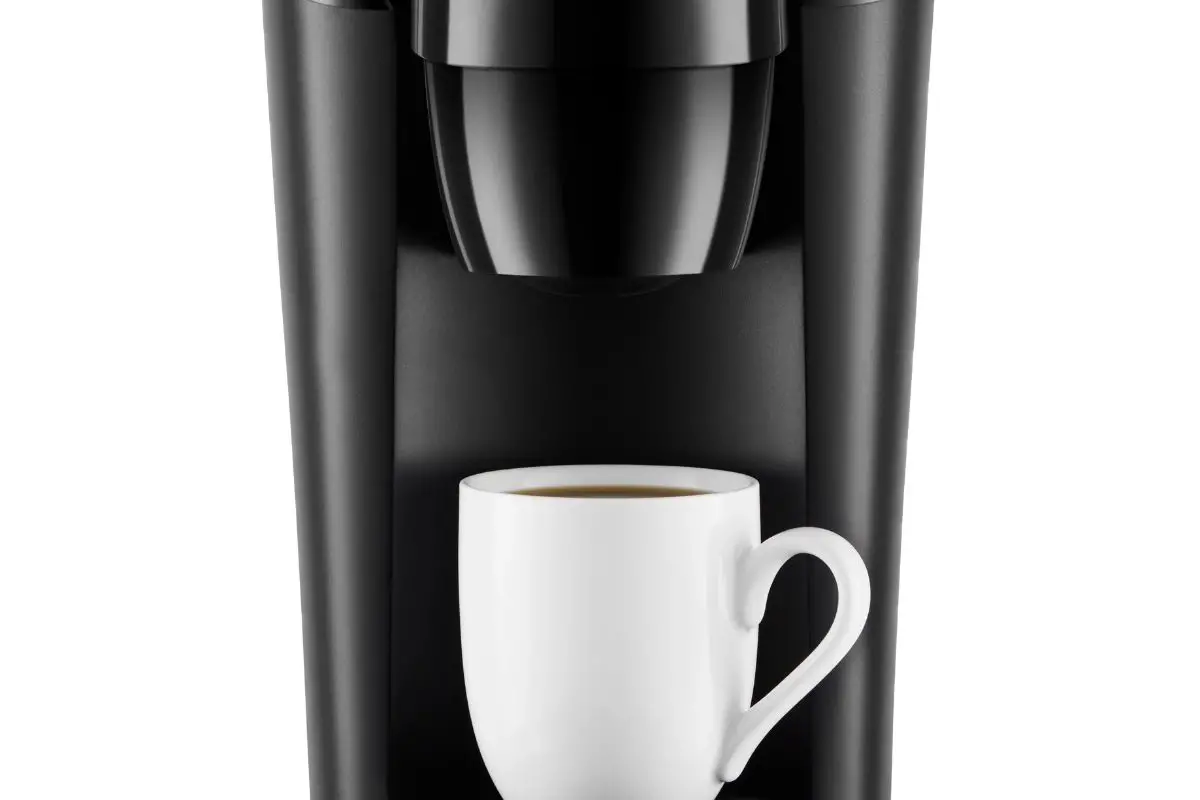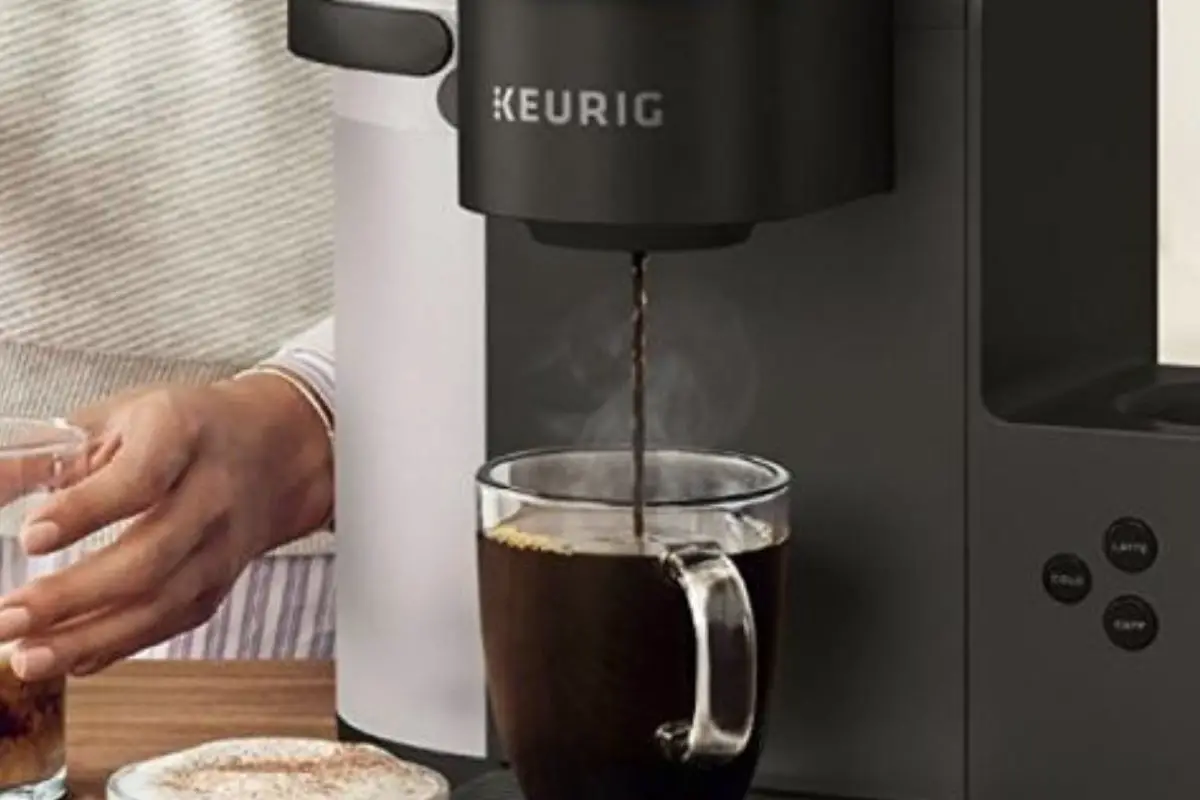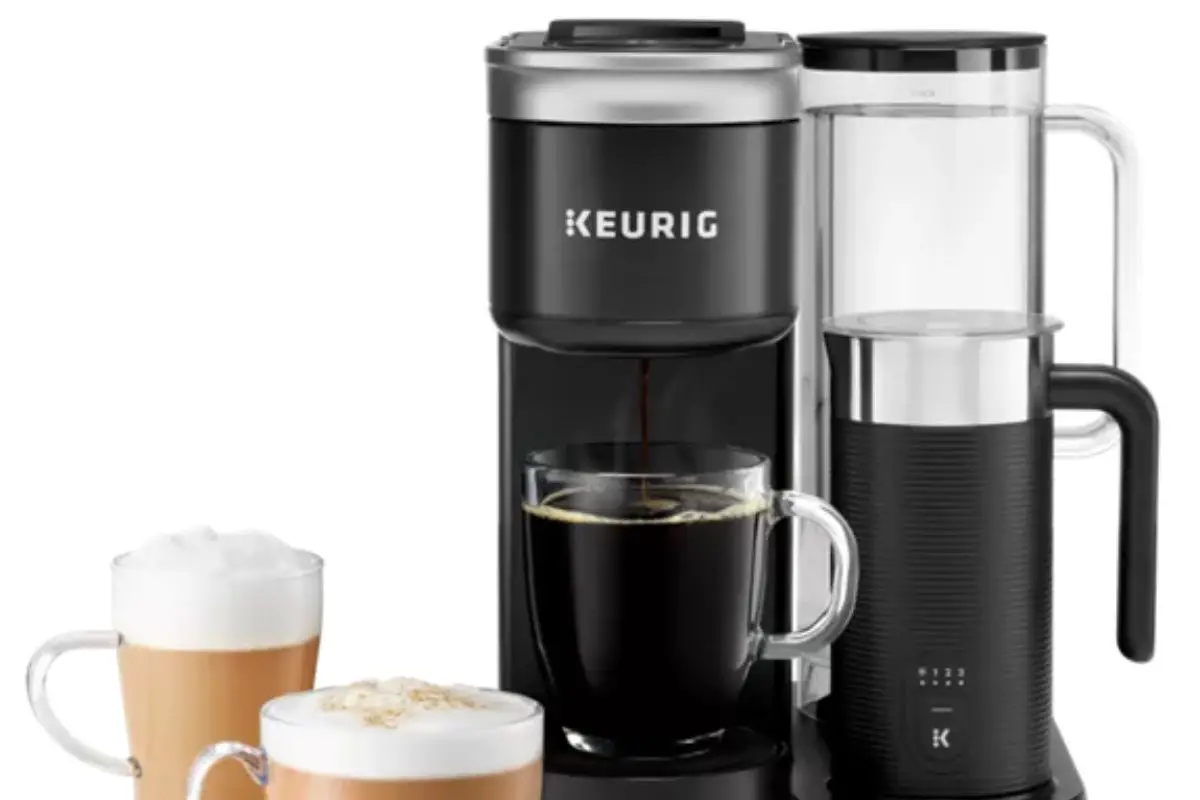In a world where convenience and efficiency are highly valued, Keurig coffee machines have become a staple in many households. However, imagine the frustration of waking up in the morning, eagerly anticipating your first cup of coffee, only to find that your Keurig won’t pump water. This issue can be a common occurrence for Keurig users, but fear not, as there are steps you can take to troubleshoot and resolve the problem.

For instance, one hypothetical scenario involves a Keurig user named Sarah, who encountered this issue and was able to successfully resolve it through a series of troubleshooting steps. This article will provide a detailed analysis of the possible causes and solutions for a Keurig that won’t pump water, ensuring that you can enjoy your morning coffee without any interruptions.
Key Takeaways
- Troubleshooting steps such as checking water reservoir alignment, cleaning the needle, and descaling can help resolve Keurig machines not pumping water.
- Resetting the Keurig by unplugging and plugging it back in can often resolve pumping issues.
- Internal blockages like debris or mineral buildup should be checked and cleaned.
- Contacting customer support is essential if troubleshooting steps don’t resolve the issue, as they can provide guidance and expertise.
Check the Water Reservoir
The first step in troubleshooting a Keurig that won’t pump water is to examine the water reservoir. This component plays a crucial role in the functioning of the machine, as it holds and supplies the water needed for brewing.
Firstly, ensure that the water reservoir is properly seated in its designated position. If it is not aligned correctly, the machine may not be able to draw water from it. Additionally, inspect the reservoir for any cracks or damage that could hinder the flow of water. If any defects are found, it is important to replace the reservoir to ensure safe operation.
Another aspect to consider is the water level in the reservoir. The Keurig machine relies on the water level sensor to determine when to start the brewing process. If the water level is too low, the machine may not initiate the pumping action. Therefore, it is crucial to maintain an adequate water level by periodically refilling the reservoir.
Once the water reservoir has been examined and any issues have been addressed, the next step is to clean the needle. This will ensure that the water can flow freely through the system, promoting efficient pumping and brewing.
Clean the Needle
To address the issue at hand, attending to the maintenance of the needle becomes imperative, as it serves as the gateway for fluid circulation within the machine.
Over time, mineral deposits and coffee grounds can accumulate in the needle, hindering the flow of water.
To clean the needle, begin by turning off the Keurig and removing the water reservoir.
Locate the entrance needle, which is usually found at the bottom of the K-Cup holder.
Using a paperclip or a specialized cleaning tool, gently insert it into the needle and move it around to dislodge any debris.
It is crucial to be cautious during this process to avoid any injuries.
Once the needle is clean, replace the water reservoir and turn the Keurig back on.
This simple maintenance step can often resolve the issue of the Keurig not pumping water.
Moving forward, descaling the Keurig will be discussed to further ensure proper functioning of the machine.
Descaling the Keurig
Descaling the Keurig is an essential step in ensuring the optimal performance and longevity of the machine, promoting a sense of reliability and satisfaction in users. Here are four important steps to follow when descaling your Keurig:
- Prepare the descaling solution: Mix equal parts of water and white vinegar in a container. The vinegar’s acidity helps remove mineral deposits in the machine.
- Empty and clean the water reservoir: Remove the water reservoir from the Keurig and empty any remaining water. Wash the reservoir with warm, soapy water and rinse thoroughly to remove any residue.
- Run the descaling solution through the Keurig: Place the water reservoir back onto the machine and pour the descaling solution into it. Start the brewing cycle without inserting a K-Cup. Allow the solution to run through the machine until the reservoir is empty.
- Rinse and flush the Keurig: Remove the water reservoir again and fill it with clean water. Run the brewing cycle multiple times until the reservoir is empty to ensure all traces of the descaling solution are removed.
By following these steps, you can effectively descale your Keurig and restore its functionality. Once the descaling process is completed, you can proceed to the next section about resetting the machine, which further ensures its optimal performance.
Resetting the Machine

Resetting the machine is a crucial step in maintaining the optimal functionality and performance of the Keurig, akin to recalibrating a compass to ensure accurate navigation. When the Keurig fails to pump water, resetting the machine can often resolve the issue.
To reset the Keurig, start by unplugging it from the power source. Wait for a few minutes to ensure that all internal components have fully discharged. This step is important as it allows the machine to reset and clear any temporary glitches or errors.
After the waiting period, plug the Keurig back in and power it on. This reset process helps the machine to recalibrate itself and restore proper functioning. It is essential to follow the instructions provided by the manufacturer when resetting the Keurig to ensure safety.
Once the machine has been successfully reset, the next step is to check for blockages, which will be discussed in the subsequent section.
By performing a reset, Keurig owners can often resolve issues related to water pump failure and restore the machine to its optimal performance.
Now, let’s move on to checking for blockages.
Check for Blockages
Examining for any potential obstructions is the next step in the process of troubleshooting a Keurig machine. It is crucial to ensure that there are no blockages hindering the flow of water. Here are two sub-lists to consider:
- Internal Blockages:
- Remove the water reservoir and check for any debris or mineral buildup.
- Inspect the needle that punctures the K-Cup, ensuring it is free of any clogs.
- Clean the entrance and exit needles using a paperclip or the Keurig maintenance accessory.
- Examine the water line for any kinks or obstructions that may impede the flow.
- External Blockages:
- Check the water source and make sure it is properly connected and turned on.
- Inspect the water filter and clean or replace it if necessary.
- Ensure the water reservoir is properly seated and there are no leaks.
- Examine the tubing for any kinks or blockages that may restrict water flow.
By thoroughly examining for any obstructions, you can identify and resolve potential issues that may be preventing the Keurig machine from pumping water effectively. If these steps do not resolve the problem, it may be necessary to contact customer support for further assistance.
Contact Customer Support
When faced with persistent issues that cannot be resolved through troubleshooting steps, seeking assistance from the manufacturer’s customer support can provide valuable guidance and expertise. Contacting customer support is especially important when dealing with a Keurig machine that won’t pump water, as it may indicate a more significant underlying problem. Keurig’s customer support team consists of knowledgeable professionals who are trained to address a wide range of issues and provide appropriate solutions.
To facilitate communication with customer support, it is helpful to provide them with relevant information about the problem. This can include details such as the model and serial number of the machine, any error messages displayed, and a comprehensive description of the issue. By providing this information, the customer support team can better diagnose the problem and offer appropriate advice or solutions.
In order to enjoy what is written, a table can be incorporated to present the information in a clear and organized manner. The table should have four columns and two rows. The first column can include the necessary details to provide customer support, such as the model and serial number. The second column can include any error messages displayed, while the third column can contain a comprehensive description of the issue. The fourth column can be left blank for the customer support team to fill in their advice or solutions.

Seeking assistance from customer support not only helps in resolving the issue at hand but also ensures the safety of the user. Keurig’s customer support team can provide expert advice on how to handle the machine properly, preventing any potential hazards. Additionally, they may be able to provide information on any recalls or safety concerns related to the specific model in question.
Overall, contacting Keurig’s customer support is an essential step when troubleshooting efforts prove unsuccessful. Their expertise and guidance can help resolve the issue, ensure user safety, and provide valuable insights for maintaining and operating the Keurig machine effectively.
Frequently Asked Questions
How do I check if my Keurig is receiving power?
To check if a Keurig is receiving power, first ensure it is plugged into a working outlet. Check for any visible damage or loose connections in the power cord. Use a multimeter to test the voltage at the power cord terminals.
Why is my Keurig machine making a loud noise when I try to brew?
The loud noise emitted by a Keurig machine during brewing may indicate a malfunction. This could be due to various issues, such as a clogged water line or a faulty motor, which should be addressed to ensure safe operation.
Can I use any type of water in my Keurig machine?
Any type of water that meets the required standards of quality and safety can be used in a Keurig machine. It is important to use water that is free from contaminants to avoid potential issues with the machine’s performance.
What should I do if my Keurig machine is leaking water?
If your Keurig machine is leaking water, there are a few steps you can take to address the issue. First, ensure that all connections are secure and free from debris. If the problem persists, it may be necessary to contact customer support for further assistance.
How often should I clean my Keurig machine?
It is recommended to clean your Keurig machine every 2-3 months to ensure optimal performance and prevent clogging. Neglecting regular cleaning can lead to issues such as water pump malfunction or reduced water flow.
Conclusion
The issue of a Keurig not pumping water can be resolved by following a few troubleshooting steps.
Firstly, ensure that the water reservoir is properly seated and filled with water.
Secondly, clean the needle to remove any clogs or debris.
If the problem persists, descaling the Keurig might be necessary to remove mineral buildup.
Additionally, resetting the machine can help resolve any technical glitches.
Finally, check for any blockages in the system.
If all else fails, contacting customer support for further assistance is recommended.
In conclusion, troubleshooting a Keurig that won’t pump water is like unraveling a tangled thread, requiring patience and attention to detail.
Also read: